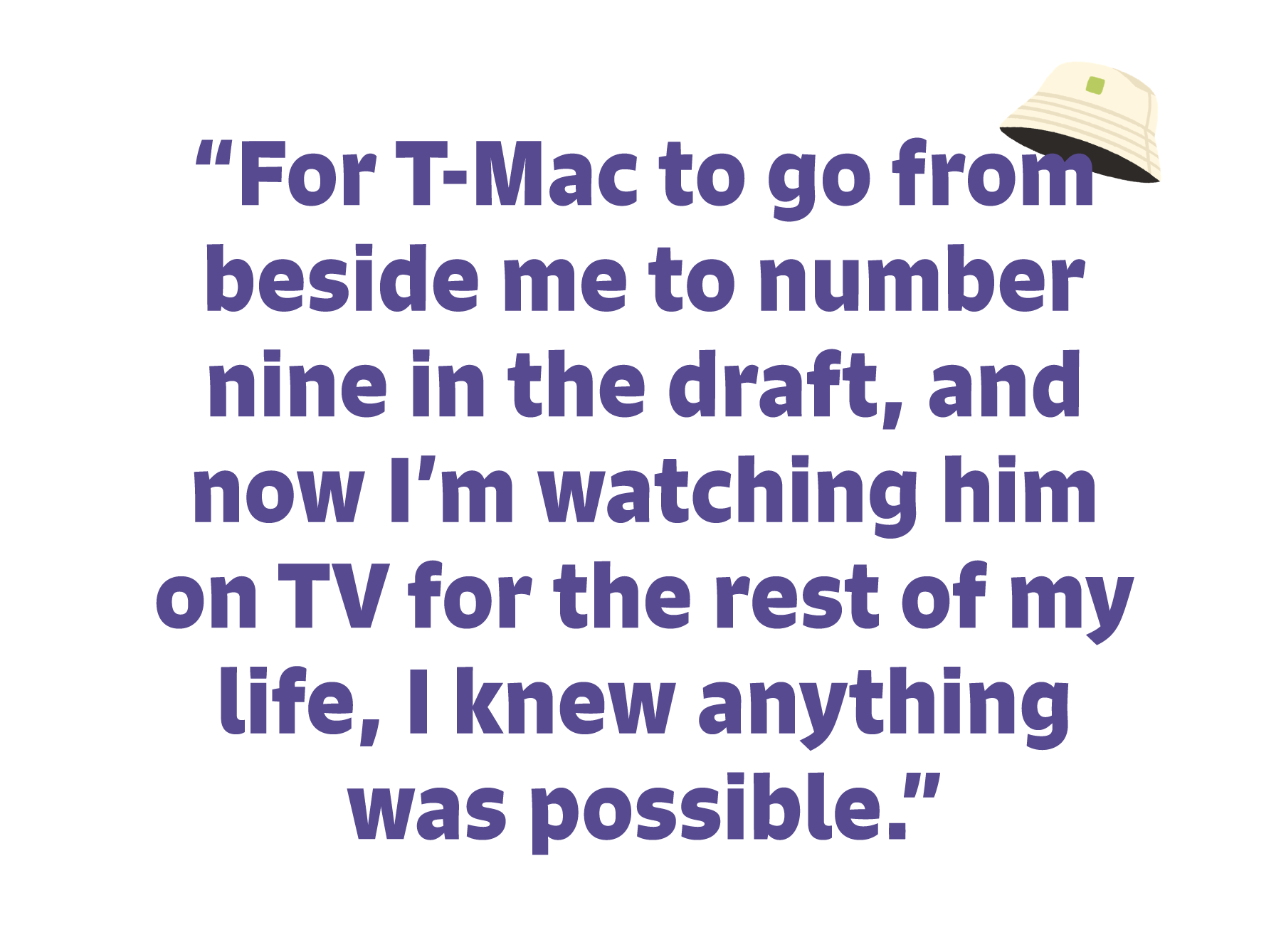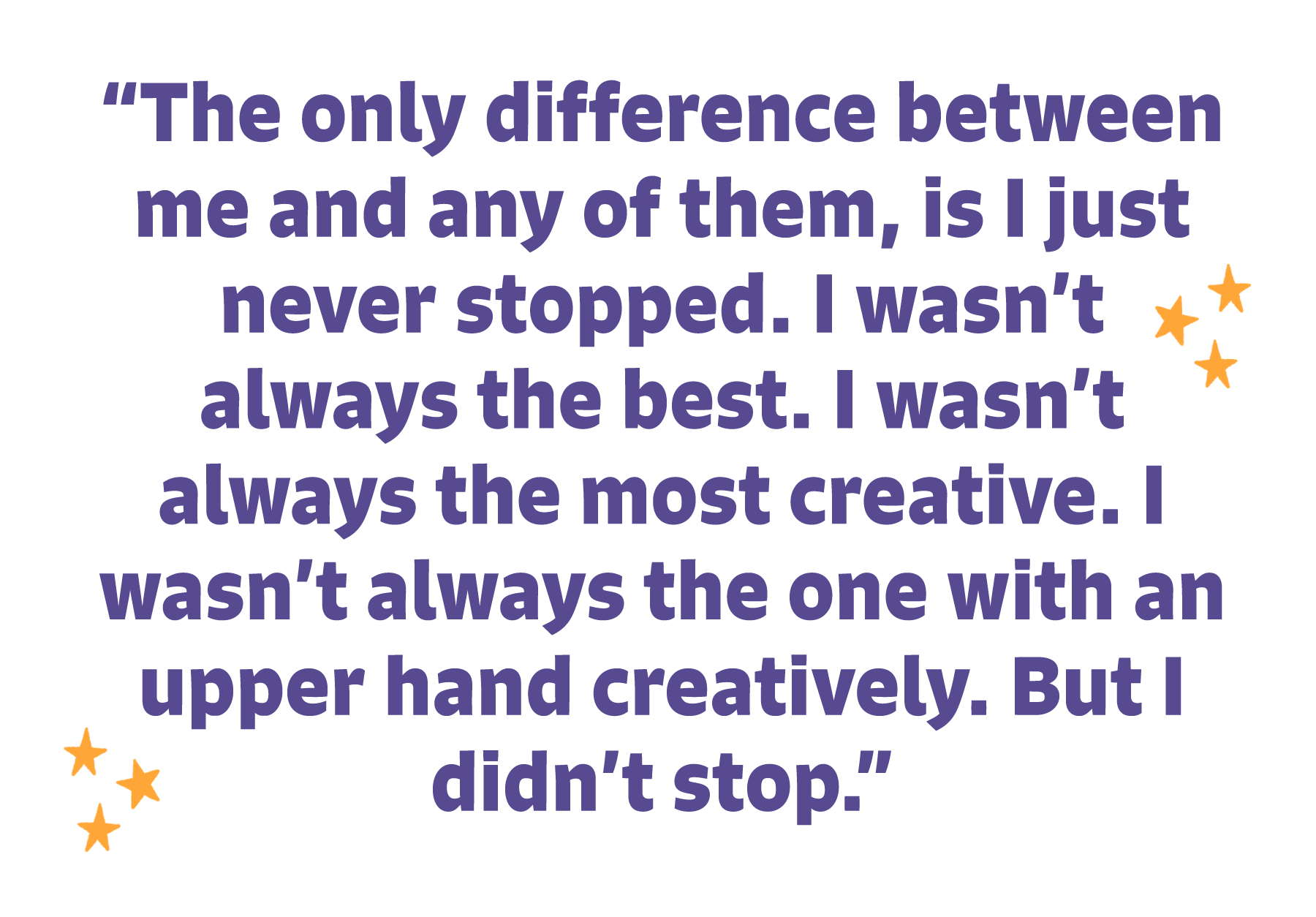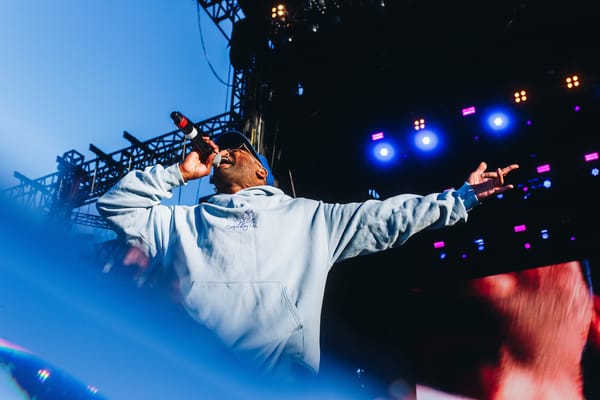Seeing Stars
How a series of unlikely, up-close influences taught the Grammy-nominated, Durham-born producer Groove that anything was possible.

Editor's Note: Today's story is available to read in full, even without an email subscription. If you enjoy it, we hope you'll consider throwing us an email address so we can send you more original, North Carolina-focused articles like it in the future. It takes just a few seconds to subscribe, either at the green button in the bottom right, in our footer, or in the sign-up box during the piece. Thanks for stopping by.
The fourth player in NBA history to make the leap directly from high school to the pros was a 6’8” 18-year-old from Mount Zion Christian Academy in Durham, North Carolina.
Mount Zion had a strict basketball program back then. A New York Times story from 1996 — the first and only year that future Hall-of-Famer Tracy McGrady would play basketball there — depicted a team culture that would be considered outright draconian by today’s standards: players lived together in a “missionary house” with their coach, Joel Hopkins, and his family. They rose before dawn for five-mile runs in the dark. They were not allowed to date, use swear words, listen to rap music, wear jewelry, or even talk on the phone to friends.
The methods may have been peculiar, but the results were undeniable. Coach Hopkins took a kid with no prospects from Auburndale, Florida, and in eight months had him on an NBA team, behind the wheel of a brand-new Lexus LX450, with an Adidas endorsement deal worth 12 million dollars. All without ever having touched a college textbook.
Even today, almost 20 years later, Tracy McGrady’s transition from classroom to NBA courtside still seems a little unbelievable. Every detail sounds like the work of make-believe — something stolen out of a movie or a fairy tale.
That’s the best part. The most memorable stories all have that quality. A certain surrealism. A feeling that you can barely trust what you’ve seen with your own eyes.

No one knows that feeling better than Groove.
The L.A.-based, Grammy-nominated music producer — known for his work with J.Cole, Smino, JID, Maxo Kream, and more — was one of the 200 K-12 students who attended Mount Zion the year Tracy McGrady enrolled and suited up for his lone season in Durham. Even at a young age, he knew it wasn’t ordinary for a student’s life to change in 12 months, but that’s exactly what he witnessed during his first-grade year.
“Bro, I would see him every day,” Groove tells me excitedly over the phone, reliving and retelling the old memories as if they happened yesterday.
“My pops was the announcer at the home games. I saw almost every one,” he says.
“For T-Mac to go from beside me to number nine in the draft, and now I’m watching him on TV for the rest of my life, I knew anything was possible.”
McGrady’s one year at Mount Zion was the first up-close example for Groove of how big the world was. And that Durham, NC, his hometown, could produce superstars.

A second example would come in 2004, during the eighth grade.
Jay-Z, his favorite rapper, had just released The Black Album. An older kid told him that track seven, “Threat,” was produced by someone from North Carolina. He couldn’t believe it. No way. Not a chance. The only North Carolinian he knew in hip-hop working with notable artists was Petey Pablo.
“Two, maybe three weeks later, that same older kid told me the producer who made “Threat” had a daughter at our school.” Again, Groove’s reaction was disbelief. Just another rumor that kids spread on playgrounds and blacktops. Then, during a fire drill, a Black Tahoe pulled up while everyone was outside. The older kid pointed and said, “That’s him right there.” Disbelief suddenly became divine timing.

What did you do? I ask.
“Bro, he walked inside to drop his daughter off. When he came back outside, I met him in his tracks. Like, ‘You 9th Wonder? You made beats for Jay-Z?’”
Groove laughs and confesses that this story has never been shared. Not even with 9th.

When it comes to storytelling, Groove is a natural. He’s candid and speaks vividly, careful not to skip a detail. His upbringing was deeply religious and very disciplined — the same strict rules McGrady followed at Mount Zion were true for him as well. But Groove didn’t hoop. His love, rap music, was a forbidden affair.
“I would have BET on one channel and ESPN on the Last,” he remembered. “I would have to hit 'Last' soon as my parents walked in the room so they couldn’t see me listening to no rap.”
We both laugh at how today’s biggest, most influential genre was so misunderstood just 25 years ago. That only made it more sacred for Groove. Hip-hop was his sneaky link. His little getaway. Coveted because it wasn’t given. He had to earn the space to discover music for himself.
“As time went on and I got older, my parents got to the point where they didn’t want to stand in the way of what I love so much. They supported whatever I wanted to do.”
What he wanted to do was produce. An older kid had put him on to the beat-making software FL Studio that eighth grade year. To make up for not having a computer at home, Groove downloaded the FL Studio demo at a local library. It wasn’t a comfortable setup, but even that limited access gave him a space to move ideas from his brain to the computer. Not quite producing yet, but the tools were there.
By the time we first met in 2018, Groove was living in Atlanta, working closely with Edgefield, South Carolina, artist Childish Major. On a local level, his production work with the Durham-based rap group Wreck-N-Crew had brought acknowledgment and credibility, but it wasn’t widespread. He had yet to break through. This is usually when an artist starts to get anxious. When they start to reflect on how long their journey has been, and when the thought of never making it becomes more and more prominent in their mind.
If, for whatever reason, Groove had succumbed to those kinds of thoughts and quit in 2018, he would’ve missed out on the biggest break of his career — a placement on the star-studded Revenge of the Dreamers III album in 2019.
It’s a story that’s been told before, and yet, the details only get better with time. Think back to those recording sessions for Dreamville’s Revenge III. How J. Cole had some of the best and brightest songwriters, rappers, and producers all in Atlanta, all sharing space at Tree Sounds Studios. Of all the songs made during that week-long stay, only one featured EarthGang, Smino, Saba, and Cole: the Gold-certified, Groove-produced “Sacrifices.”
“Sacrifices” created new eyes, new ears, and new relationships for Groove, allowing him to maximize his talent for sounds and samples on larger canvases — the kind of thing that doesn’t happen for a music producer from Durham, NC every day.
Like T-Mac before him, showing up at Mount Zion one moment and dunking in NBA stadiums eight months later, Groove seemingly appeared from out of nowhere with “Sacrifices” and wasted no time with the opportunity it granted him — dropping records like Smino’s “90 Proof,” EarthGang’s “WATERBOYZ,” Maxo Kream’s “11:59,” JID’s “Half Doin Dope,” and Bas’ “Black Jedi” in the years after.
“The only difference between me and any other creative that I ever made music with,” Groove admits, “the only difference between me and any of them, is I just never stopped. I wasn’t always the best. I wasn’t always the most creative. I wasn’t always the one with an upper hand creatively. But I didn’t stop.”
Not stopping is easier said than done. That’s why I like Groove’s story. He’s a reminder that you can either dwell on the obstacle or overcome it. More often than not, another person’s journey is confirmation that you can do it too. That’s why Groove is such a vocal supporter of the rap group Little Brother. They were the first rappers to come out of North Carolina and had him feeling like music from their state could travel across the world and be impactful.
“They opened the door for Cole,” Groove explained. “Because before Little Brother, there was no presence in North Carolina like that. It was artists doing it locally."
“There’s always been a local scene. But on a respect level, artistically… they were the first to do it. I always give Little Brother that credit.”
Tracy McGrady. 9th Wonder. J. Cole. Little Brother.
Each encounter, whether in-person or from a distance, expanding a young producer’s sense of belief. Every interaction bringing with it the awareness that world-renowned artists and athletes weren’t far.

That’s not a feeling you always have when you’re young. Most of us, especially before social media, felt like there was a vast distance between ourselves and the people who were moving culture and creating art. Now, through a combination of persistence and belief, Groove has positioned himself to be amongst the next crop of producers who do exactly that.
“The Groove album is on the way,” he shares, toward the end of our call. “It’s very early but I’m allowing myself to keep laying one brick at a time. Allowing myself to give the world something that’s 100% me."
As he knows from his own childhood, it wouldn’t be the first time that Mount Zion or Durham had given the world something to remember.






